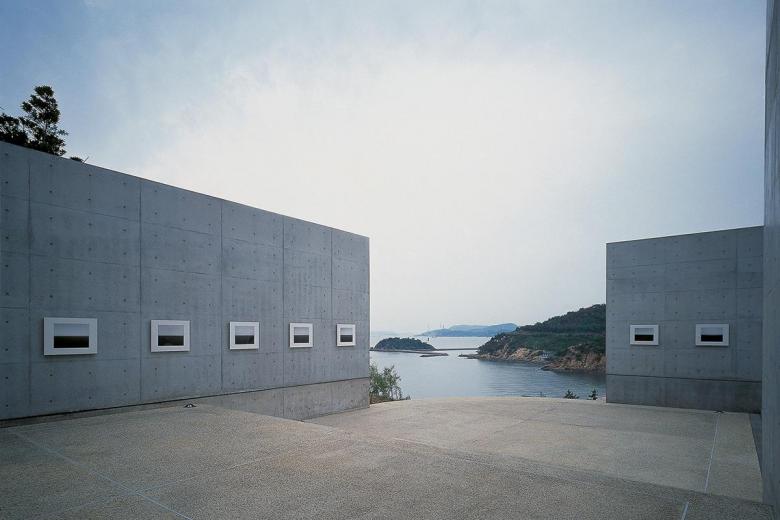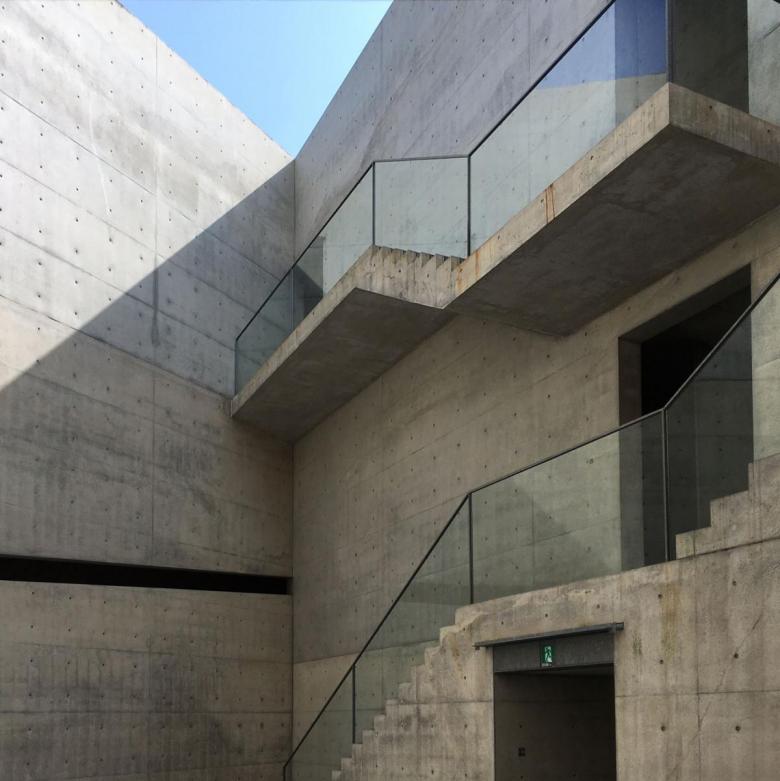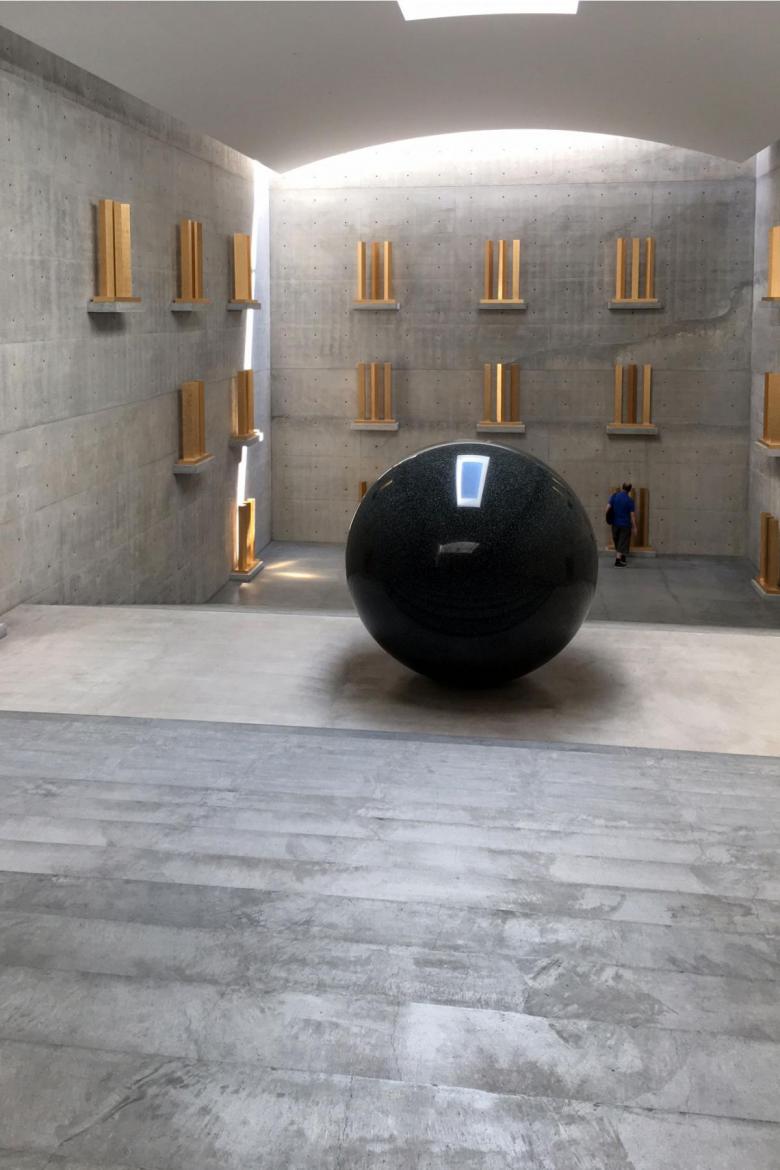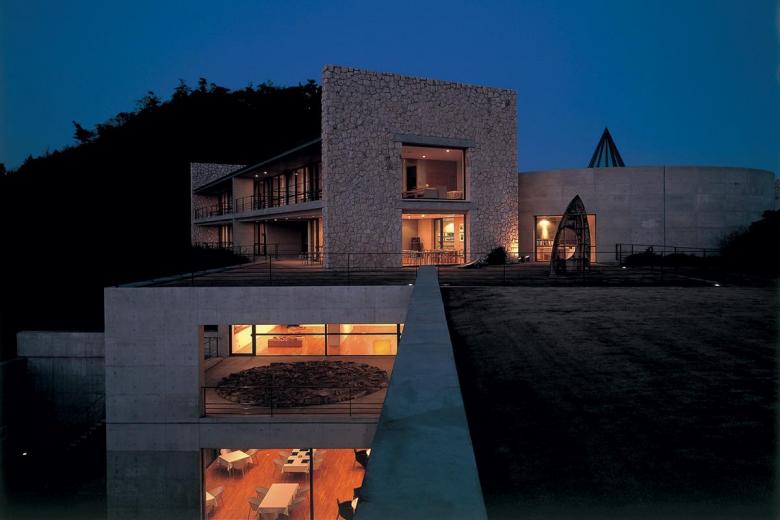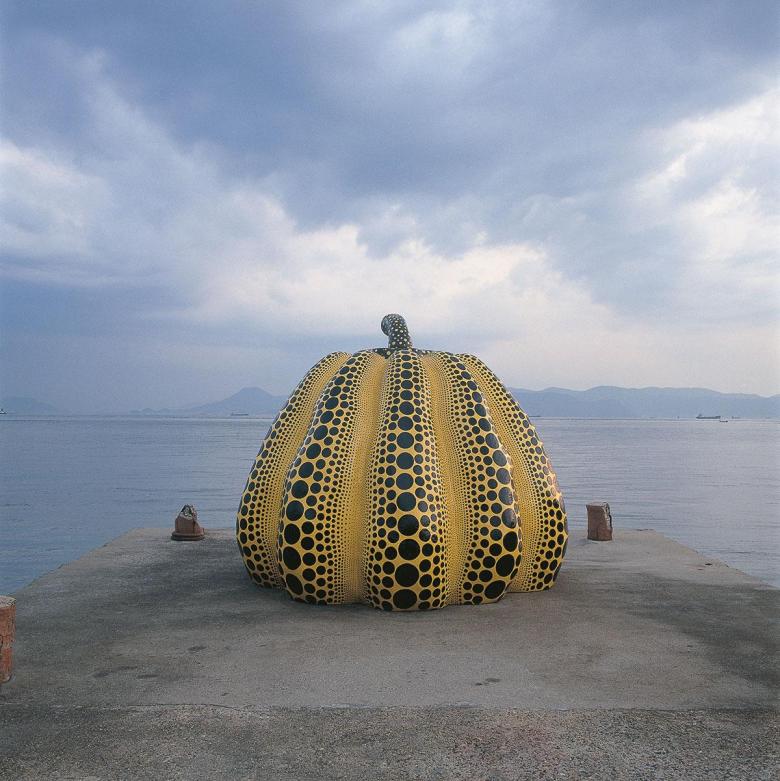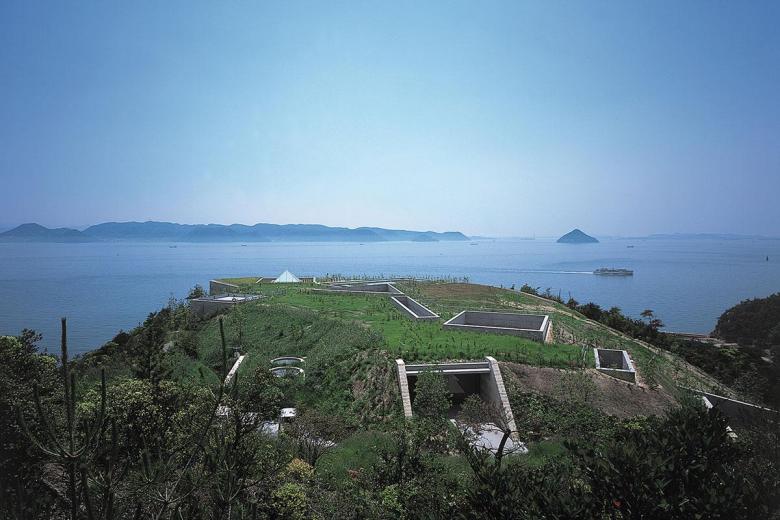Enjoying Art sans Shoes
Ulf Meyer
30. augustus 2017
Hiroshi Sugimoto's "Seascapes" (Photo: Benesse House)
The art island of Naoshima in Japan’s Inland Sea is a synthesis of the arts. Here, architecture, nature and art are combined to form a synesthetic experience, which is without equal even in the culturally spoilt Land of the Rising Sun.
Around midday at the latest, when the sunlight turns the surface of the Japanese Inland Sea into a silver plate, Naoshima develops its aura. From the highest point of the island, one’s view wanders to the skyline of the City of Takamatsu and to the huge suspension bridge on the horizon, which connects two of Japan’s four main islands. At the highest point of the island lies Chichū Bijutsukan (Translation: "art museum in the earth") by Tadao Ando, who made full use of the museum’s privileged location: it artfully frames and directs views. The museum is dedicated to only three artists: Claude Monet, James Turrell and Walter de Maria – an unusual combination. It is thus the climax of the transformation of the fishermen’s island into a synthesis of the arts.
Photo: Benesse House
The enjoyment of art follows an elaborate spatial dramaturgy – at first, the path leads straight into the hill. Unclad concrete walls define paths and yards. The asperity of the gray surfaces yields to a haptic sensation when touched: Ando’s fair-faced concrete surfaces are known to be "as soft as a child’s bottom." This is achieved through a special treatment of the formwork. All walls are proportioned according to the grid of lying tatami mats, a layout that allows them to keep their human scale and so they never appear oppressive.
Every art room in the Chichu Museum is preceded by a vestibule, where the blue sky, the island’s evergreen vegetation, and gray concrete merge. Young ladies wearing some kind a judogi are both stern and beautiful. Many hundred times a day they ask the museum visitors to take off their shoes. That’s their job. When walking in socks, the soles of feet feel the slightly curved surfaces of the white mosaic tiles, on which visitors slide into the art room: soft-footed and in muted daylight, Claude Monet’s diptych appears even more impressive than usually. Water Lilies is the title of the gigantic oil painting dating from 1915-1926, whose halves are two by three meters each. In the subdued white shining glass-roofed room it is presented like an altar. The five works by Monet seem to float in the room like the water lilies on the water surface. The ethereal atmosphere is transferred to the visitors.
Monet’s "Water Lilies" in the glass-roofed room (Photo: Benesse House)
Architectural staging and curatorial celebration of masterpieces is the specialty of the Naoshima Island, which is regarded as a worthwhile stop during a trip through Japan for more than just art lovers. Ando’s architecture teases out the island’s genius loci. A "place of pilgrimage" has thus been created for friends of art and nature. The architecture merges three completely disparate oeuvres.
The rules of the young ladies in the museum might seem to be overly rigorous, but only formalities can achieve the Omotenashi atmosphere of cultivated discourse! The whole country is characterized by exceptional cleanness, etiquette, civilized behavior, and hospitality, which is not common in Europe. The founder of the famous Japanese tea ceremony, Sen no Rikyū, once shaped the opinion that hospitality is only possible "with commitment and a pure heart." He thus laid the foundation of the Omotenashi culture, which also characterizes the Chichu Museum.
Installation by Walter De Maria (Photo: Benesse House)
Right next to Monet’s paintings, light artists James Turrell has created an accessible artwork combining nature and art: an inner courtyard with wraparound benches elegantly frames the sky with a roof window so well that visitors begin to enjoy it as a kinetic artwork. Open Sky is the name of Turrell’s masterpiece. Just like the installations by Walter De Maria next door, it was specifically created for this exhibition space. A patient young lady stands in front of each room, who tells in no uncertain terms that these artworks, too, can only be enjoyed without footwear.
The blunt, fair-faced concrete building, which lives on its primary geometry, makes do with nothing but daylight. It dramatically enters through narrow slits in the monolithic walls. The shadows wandering in the yards in the course of the day change like the pointers on a sundial. When daylight slowly fades away in the evening, the museum is closed.
Benesse House, built according to plans by Tadao Ando (Photo: Benesse House)
The "Nao" syllable in Naoshima means "straight" and thus corresponds to both the architecture and the museum concept. The museum becomes an artwork itself, surrounded by the Chichu Garden featuring 150 plant species (among them, of course, many waterlilies) that occur in Monet’s paintings or in his garden in Giverny, Normandy. Monet was a passionate gardener. The colorfulness of his paintings is admired and loved in Japan. In Eastern Asia, there is no comparable culture of color in fine arts.
Pumpkin sculpture by Yayoi Kusama (Photo: Benesse House)
While the design of the Chichu Museum is radically modern, the idea to simultaneously enjoy art and nature and combine them with hospitality has a long tradition in Japan. The promenade architecturale leads up from the cape to the Benesse House, again a design by Ando. The name was composed from the Latin words "bene" and "esse" in 1995 and already defines the theme of "well-being." The museum was donated by the educational publishing company Benesse, and the development of Naoshima into an art island owes its existence to the founder of the publishing house. In 1985, the Benesse Foundation came to an agreement with the mayor of Naoshima about the new appropriation of the island as a place of the arts.
The Benesse House, which opened in 1992 as the first hotel on the island, comprises ten guestrooms. Visitors walk through the building and the centrally located spatial cylinder. This gives movements a cinematic effect and thereby complements the "promenade." As on the island, ascents and descents alternate in the Benesse Museum, cadences and decadences incidentally lead past all artworks and out into the semi-closed courtyard with a view to the sea and the mountains. Here, Hiroshi Sugimoto’s Seascapes photographs are so skillfully hung up on an enclosing courtyard wall that the beholder’s eyes can simultaneously look at the depicted oceans and the Seto Inland Sea.
Photo: Benesse House
Since 2010, Naoshima has hosted the Setouchi Art Triennale for contemporary art. It lasts eight months and is simultaneously presented on eleven neighboring islands and in two coastal towns. During Triennale times, many "long-nosed" connoisseurs come here. A Yayoi Kusama sculpture in the shape of a huge pumpkin welcomes arriving guests at the harbor. Kusama’s yellow-black dotted pumpkin has become the symbol for Naoshima’s new role as an art destination. The dots can already be discovered onboard the ferries. Even the ferry berth is an (architectural) artwork, designed by SANAA from Tokyo. Kazuyo Sejima has lent it a fragile elegance. Within sight of the ephemeral berth, there is an accessible metal mesh sculpture created by Sou Fujimoto, the young star of Tokyo’s architecture scene. He created a polygonal "cage" from a metal grid painted white, in which one can sit. When turning eastward, one can reach Honmura, Naoshima’s most beautiful village. In this sleepy fishing village, artists set up Art Houses in six vacant timber buildings. The most impressive Art House Project was implemented by James Turrell. In this spatial artwork, guests enter a jet-black, windowless room (designed by Ando), which is characterized by absolute silence and darkness.
An Ando Museum was erected in the architecturally unspoiled village. The silver-gray wooden roof of the new community center cannot be missed. This wooden building, a design by Hiroshi Sambuichi, is a sensation: an opening in the Dutch gable roof allows natural ventilation of the large hall underneath, where people play badminton and perform Bunraku puppet theatre. The architect derived the hall’s north-south orientation from the buildings in the village. The architectural achievements on Naoshima have been well received by the residents, even though the southern part of the island has become a sculpture and architecture park. A red pumpkin by Kusama marks the white sandy beach at the foot of the art museum, which invites visitors to enjoy a picnic – but not a swim. Hungry great white sharks have already been spotted in the Setouchi Sea. Nevertheless, beach goers take off their shoes to dip their feet into the warm sea – and they do it without a young lady in a cotton suit asking them to do so.
This article originally appeared as "Schuh-loser Kunstgenuss" on German-Architects. Translation is by Bianca Murphy.
